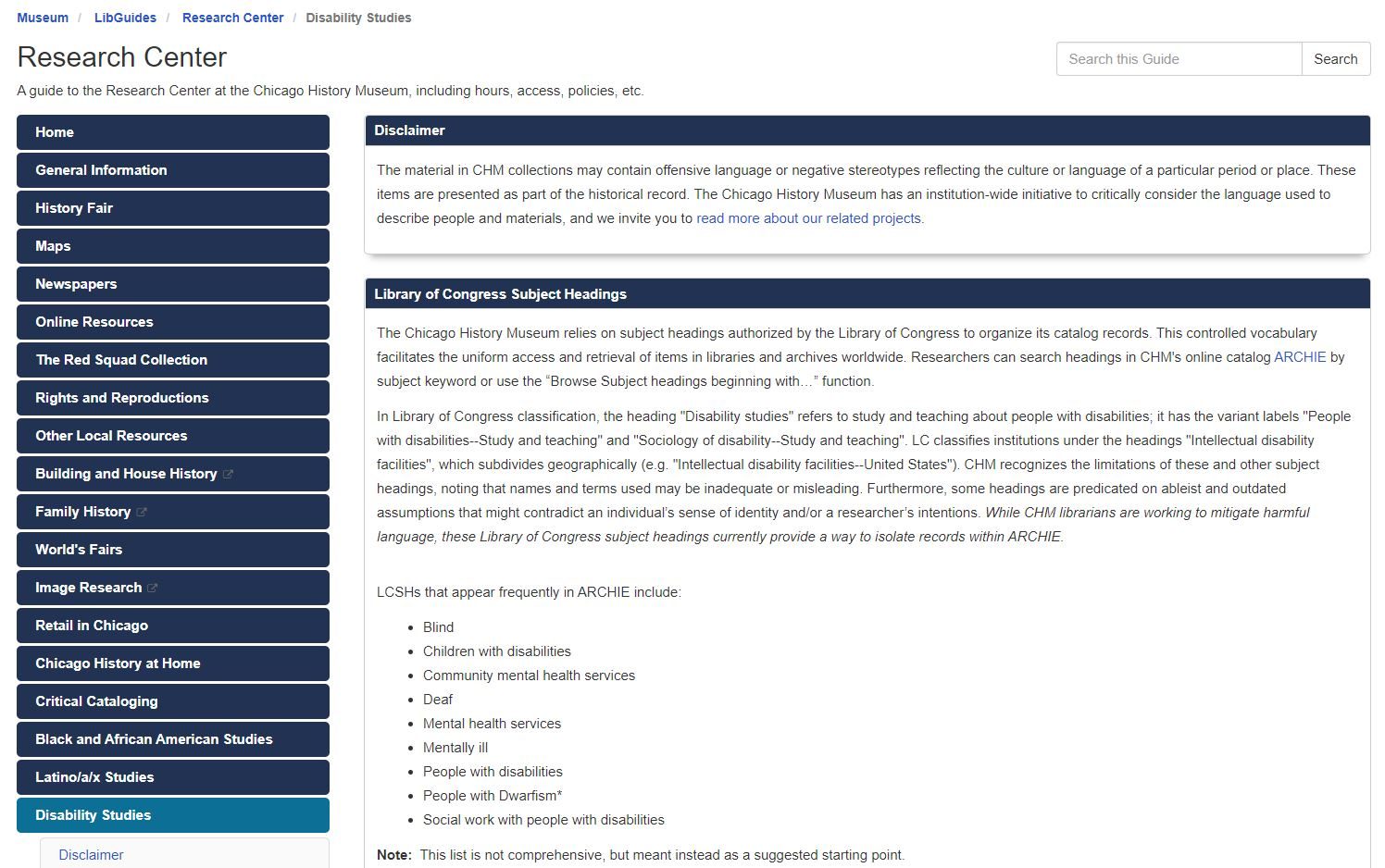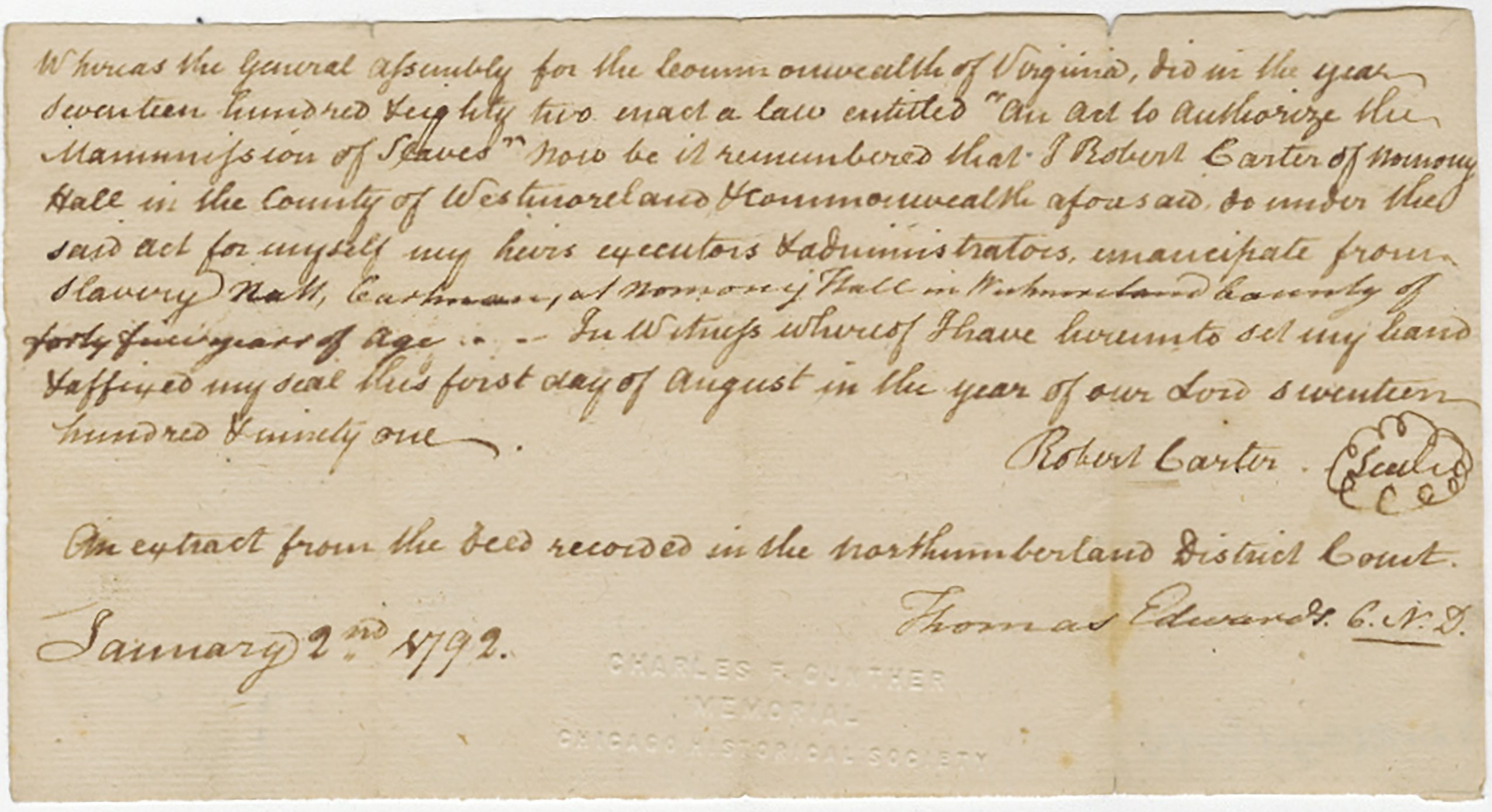In this blog post, Ariel Robinson, Chicago History Museum Research Center page and recent library school graduate, writes about her experience designing a Disability Studies LibGuide for CHM.
 Landing page of CHM’s Disability Studies LibGuide
Landing page of CHM’s Disability Studies LibGuide
At CHM, Gretchen Neidhardt, cataloging and metadata librarian, and Elizabeth McKinley, technical services librarian, have worked on developing LibGuides (subject guides) for various ethnic and BIPOC groups in Chicago as part of larger critical cataloging efforts. Since December 2020, I have been helping draft a LibGuide for Chicago’s disability community. Since I started at the Museum in 2018 as the photocopy assistant in the Research Center, the team has been supportive and enthusiastic about giving me opportunities to gain practical experience in concepts I’ve learned while completing my MLIS. LibGuides are an important and useful tool for reference and instruction.
I began my research with a conversation with Gretchen and Elizabeth about the structure of the guide and their critical cataloging work, which involves updating the keywords and subject headings for works about disabilities to reflect modern changes in language. My research began with works from disability rights activists about museum collections, language choice, and identity. This led me to Project LETS, which describes itself as “a national grassroots organization and movement led by and for folks with lived experience of mental illness/madness, Disability, trauma, & neurodivergence.”
The recorded conversation between Stacey Milbern and Patty Berne, “My Body Doesn’t Oppress Me but Society Does,” and presented by the Barnard Center for Research on Women, broke down the difference between impairment and disability. According to Milbern and Berne, “impairment” is the manifestation of a neurological or physical condition, and “disability” is created by society’s inadequate efforts to create an accessible world through accommodations and design, which imposes barriers on people with disabilities, making it harder for them to fully participate or move within society. I chose to incorporate that difference in language use (see the “Evolution of Language: Disability Identity Terms and Theories” box), in addition to the main content of the guide based on ideas supported by the majority of disability studies scholars.

Bodies of Work: The Chicago Festival of Disability Arts and Culture, April 20–30, 2006, Department of Cultural Affairs, Chicago; call number: MB000984
I also included some local organizations that offer resources or influence policies related to people with disabilities in Chicago. For example, Access Living is a local organization that advocates for services such as housing, peer support, and access to transportation. The “Featured CHM Collections” box on the LibGuide links to a Studs Terkel interview with founder Susan Nussbaum. In addition to this interview, there are featured items of each media type available—audio, published material, photographs, and archival collections. (Note: everything but the archival material will still be available while the East Basement undergoes renovations.)

Independent life, Access Living, 1981–1993, Chicago; call number: HV3011 .I6 OVERSIZE
While working on this guide, I found several smaller local initiatives focused primarily on mental health that didn’t quite fit the guide. Some of these were temporary pop-ups such as coffee shops or works in progress through existing organizations.
In addition to adding content to the guide, I also changed the color scheme and layout of the guide to meet web accessibility standards and improve the overall look and feel for all researchers. I used the WAVE extension for Chrome to check the color contrast, compatibility with screen reading technology, and other design functions. All of the Research Center’s LibGuides now have a color scheme that passes WAVE’s color contrast check and fits the museum’s color scheme.
Disability studies covers a variety of lived experiences, and we recognize that we have not captured the full extent here and there is more work to be done. As disability studies scholar and advocate Tobin Siebers asserts in his theory of complex embodiment, “the perception and experience of disability are complex, nuanced, and individual.” We acknowledge that the disability community is not a monolith. It is our goal to collect material in a way that is collaborative, inclusive, intersectional, and expansive. This guide will be continuously updated to reflect new organizations, collections, and other resources. In addition, the guide contains a questions/comments box so readers and researchers can contact us with feedback.
Go to the LibGuide



See what people are saying!